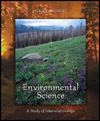 |
1 |  | 
The political will to establish the Environmental Protection Agency came after a series of high profile environmental problems like the burning of the Cuyahoga River, a decline in the bald eagle population, and smog in Los Angeles. |
|  | A) | True |
|  | B) | False |
 |
 |
2 |  | 
As a result of the environmental laws of the 1960s, point source polluters are closely regulated and the most important remaining pollution tends to be from sources that are diffuse and widespread. |
|  | A) | True |
|  | B) | False |
 |
 |
3 |  | 
Which of the following is a necessary component of public policy? |
|  | A) | legislative branch |
|  | B) | judicial branch |
|  | C) | executive branch |
|  | D) | none of the above |
|  | E) | all of the above |
 |
 |
4 |  | 
The publication of Rachel Carson's Silent Spring in 1962 is considered to be the beginning of the modern environmental movement. |
|  | A) | True |
|  | B) | False |
 |
 |
5 |  | 
Which event(s) helped contribute to the decline of the environmental movement during the 1970s and early 1980s? |
|  | A) | energy crisis |
|  | B) | later environmental problems seemed less immediate |
|  | C) | the election of Ronald Reagan |
|  | D) | none of the above |
|  | E) | all of the above |
 |
 |
6 |  | 
Which executive agency, commission, or department is responsible for regulating endangered species as well as the national parks? |
|  | A) | Dept. of Interior |
|  | B) | Dept. of Defense |
|  | C) | Dept. of State |
|  | D) | EPA |
|  | E) | none of the above |
 |
 |
7 |  | 
Which executive agency, commission, or department is responsible for regulating toxic substances as well as air and water pollution? |
|  | A) | Dept. of Interior |
|  | B) | Dept. of Commerce |
|  | C) | Nuclear Regulatory Commission |
|  | D) | EPA |
|  | E) | none of the above |
 |
 |
8 |  | 
In the 1990s there has been a remarkable decrease in the numbers of grassroots environmental organizations that deal with local environmental problems and a similarly remarkable increase in the membership of large environmental organizations like the National Wildlife Federation. |
|  | A) | True |
|  | B) | False |
 |
 |
9 |  | 
Environmental law in the United States is primarily governed by |
|  | A) | administrative law. |
|  | B) | civil law. |
|  | C) | criminal law. |
|  | D) | retroactive law. |
|  | E) | none of the above. |
 |
 |
10 |  | 
One big problem with enforcement of environmental legislation is that, while mandated by the federal government, many of the environmental programs are administered by the individual states, many of whom interpret the laws in their own ways. |
|  | A) | True |
|  | B) | False |
 |
 |
11 |  | 
Which is true of the EPA? |
|  | A) | established in 1955 |
|  | B) | designed to rule on the constitutionality of the environmental statutes |
|  | C) | designed to implement and enforce environmental statutes |
|  | D) | refuses to use command and control model in its regulatory function |
|  | E) | all of the above are true regarding the EPA |
 |
 |
12 |  | 
Drought and deforestation in Africa indicate that environmental problems can cause hunger and refugee problems that affect many nations. |
|  | A) | True |
|  | B) | False |
 |
 |
13 |  | 
Some experts estimate that because the developing world wants to attain a standard of living like the already industrialized world, by the middle of next century the developing world will be responsible for nearly two-thirds of the global production of greenhouse gases. |
|  | A) | True |
|  | B) | False |
 |
 |
14 |  | 
Great strides have been made in changing consumer attitudes in the United States concerning the need to change lifestyles to save the environment, and the big remaining problem is to convince world governments that there are environmental problems that need solutions. |
|  | A) | True |
|  | B) | False |
 |
 |
15 |  | 
Which of the following is an example of international cooperation to solve environmental problems? |
|  | A) | 1972 United Nations conference that set up the Environmental Programme |
|  | B) | 1987 Montreal Protocol on Ozone Depletion |
|  | C) | 1961 Antarctic Treaty |
|  | D) | Earth Summit |
|  | E) | all of the above are examples of international cooperation |
 |



 2002 McGraw-Hill Higher Education
2002 McGraw-Hill Higher Education